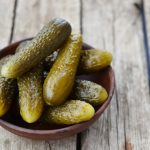 Nutrients are found in food which gets used by the body to stay healthy and perform its many functions. But on the other hand, there are nutrients found in food, specifically plants, which are not digested; these are called antinutrients. Unlike nutrients – which the body can absorb – antinutrients work to block this absorption, minimizing the benefits we receive.
Nutrients are found in food which gets used by the body to stay healthy and perform its many functions. But on the other hand, there are nutrients found in food, specifically plants, which are not digested; these are called antinutrients. Unlike nutrients – which the body can absorb – antinutrients work to block this absorption, minimizing the benefits we receive.
Generally, you don’t have to worry too much about antinutrients if you consume a balanced diet. But for those at risk for malnutrition, antinutrients can make the condition far worse. Even individuals who stick with a diet mainly consisting of legumes and grains are at higher risk of the consequences of antinutrients.
5 Ways to reduce antinutrients in food
Advertisement
 If you’re concerned about antinutrients, there are a few things you can do to reduce the amount in your food. Here are some tips to reduce antinutrients in food.
If you’re concerned about antinutrients, there are a few things you can do to reduce the amount in your food. Here are some tips to reduce antinutrients in food.
- Soaking – Letting beans and legumes soak overnight can boost nutritional content and reduce antinutrients.
- Sprouting – Sprouting occurs when the plant emerges from the seed. Sprouting boosts available nutrients. To sprout, plant the seed and allow it to grow. When a seed sprouts, antinutrients decrease.
- Fermentation – Many different foods are fermented like yogurt, wine and cheese. Bacteria or yeast is used to digest carbs found in food. Not only will this preserve food, but it can also reduce the amount of antinutrients.
- Boiling – Heating or boiling food can reduce the amount of antinutrients found. Although some antinutrients are resistant to heat, like phytate, others like protease and tannin can be greatly reduced.
- Combine methods – Depending on what you are making, you can combine a variety of methods for further reduction of antinutrients.
10 Antinutrients to avoid

It is important to note that not all antinutrients are “bad.” Like everything else in life the good comes with the bad. Here are the most common antinutrients to avoid:
Phytate (phytic acid): Reduces absorption of nutrients. Found in grains and seeds.
Tannins: Antioxidant polyphenol. May impair digestion, but sometimes can be good and offer benefits.
Lectins: Found in plants, seeds, grains and legumes. Can be harmful in high dosages.
Protease inhibitors: Found in plants, seeds and legumes. Interferes with protein digestion.
Calcium oxalate: Found in vegetables like spinach. Can cause kidney stones.
Saponins: Cannot be digested and if entered into the blood stream can lead to immune responses.
Trypsin inhibitors: Commonly found in grain products. Can be broken down with heat.
Solanine: Found in tomatoes, eggplant and peppers. Can lead to symptoms of nausea, diarrhea and abdominal pain.
Chaconine: Found in corn and potatoes. In small portions it provides antifungal properties. In large amounts it can lead to digestion discomfort.
Gluten: Hard to digest and causes digestive distress. People with celiac disease cannot break it down at all and can lead to nausea, constipation, diarrhea and stomach cramping.
The key with antinutrients is moderation. We have provided you with some tips to reduce the amount of antinutrients found in your food. Although some antinutrients can be beneficial, small dosages are key.
Related Reading:
Gluten-free bad for your health?
Today, it’s difficult not to notice all of the gluten-free products available in health food and grocery stores. There’s been a number of books, magazine articles and news segments, too – all of which have characterized gluten as a dietary. Continue reading …
Advertisement
Kidney stones can form from too much calcium oxalate. Oxalate can be found in many fruits and vegetables and even chocolate. Continue reading…
Sources:
http://authoritynutrition.com/how-to-reduce-antinutrients/
http://draxe.com/antinutrients/
http://www.livestrong.com/article/524841-the-effect-of-anti-nutrients-in-foods/
